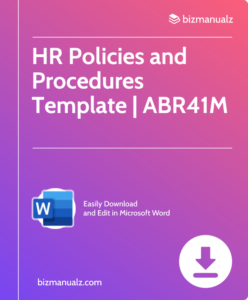What are Onboarding Best Practices?

successful onboarding best practices goes beyond paperwork or online modules. It is about integrating new recruits into your organization’s culture, values, and goals from the beginning. What are onboarding best practices?
The Importance of Onboarding
The significance of onboarding cannot be underestimated. When a fresh employee joins and organization, their initial days and weeks are fundamental for their success in the role.
- Efficient onboarding sets the tone for the employee’s experience and involvement with the company.
- It helps new workers comprehend their job duties and expectations, leading to amplified productivity.
- Onboarding let’s employees rapidly adjust to the company culture, making them feel esteemed and incorporated into the squad.
- Appropriate onboarding reduces turnover rates by forming a positive impression and guaranteeing staff feel backed from day one.
- It cultivates stronger communication between new personnel and their managers, allowing for plain feedback and goal setting.
- Onboarding also provides and opening for companies to match new hires with their mission, vision, and values.
To upgrade your onboarding process, consider adding these practices:
- Make and exhaustive orientation program that covers not just job-specific preparation but also introduces employees to the whole organization.
- Designate mentors or buddies to new recruits who can give counsel and assistance as they navigate their roles.
- Form a welcoming environment by organizing social events or team-building activities to aid connections within teams.
- Supply ongoing training options beyond primary onboarding to keep employees involved and constantly honing their abilities.
- Ask feedback from new hires frequently to distinguish areas where the onboarding process can be increased.
- Assess your onboarding program continually to ensure it stays pertinent and capable in meeting both company and employee needs.
By investing time and energy into onboarding practices, companies can set their personnel up for success while nurturing a positive and engaging work environment. Getting new workers ready for success is like piecing together IKEA furniture – if you miss a step, it’s sure to be a shaky mess.
Components of and Effective Onboarding Program
An effective onboarding program is essential for a successful welcoming of new employees. It contains several components that set the tone and help them feel supported and ready.
Components like:
- Orientation
- Training & development
- Mentorship & coaching
- Clear expectations
- Social integration
- Feedback & evaluation
Modern tech tools and strategies based on individual needs can help enhance the efficacy of onboarding. One great example is Project Oxygen by Google in 2004. After analyzing performance evaluations, they found 8 key behaviors shared by top-performing managers. These findings were incorporated into the onboarding program for better leadership.
Organizations need to embrace these components while innovating and learning from past experiences to ensure a smooth transition and foster long-term success.
Strategies for the Onboarding Process
Company XYZ had high turnover rates among new hires, so they changed their onboarding process. They added training programs, mentors, and better communication. This resulted in improved retention, productivity, and success. Measuring onboarding success is tricky, but at least you’ll have something sharp if it all goes wrong!
Creating a welcoming environment is important. Establish clear expectations, provide structured training, and implement a mentorship program. This way, new hires can contribute effectively and build relationships with colleagues.
Measuring the Success of Onboarding Programs
Measuring onboarding program success is vital to know its effectiveness and spot areas for improvement. By tracking key metrics, organizations can check employee engagement, retention rates, and productivity levels to gauge the program’s effect.
To measure success, various indicators can be utilized. Employee engagement is a notable metric; engaged employees are more likely to adjust swiftly and contribute positively. Retention rates are equally significant; quality onboarding programs help reduce turnover by giving new hires a positive experience and establishing a sense of belonging.
Productivity levels can also be used to assess onboarding success. Organizations can evaluate the time taken for new hires to make meaningful contributions and determine how effective their onboarding process is.
Moreover, feedback from managers and new employees is significant in evaluating onboarding programs’ efficacy. Checking in with managers can provide insights into how well the program has prepared new hires and identify any gaps that need to be addressed. Feedback from new employees allows organizations to understand their onboarding experience and make any needed changes.
Don’t miss out on the opportunity to optimize performance! Implement a robust measurement strategy to increase employee engagement, retention rates, productivity levels, and ultimately drive long-term success.
Every moment is important for creating and exceptional onboarding experience that sets your organization apart from competitors. Embrace constant evaluation and improvement to stay ahead in and ever-changing business world. How do we get to best practices faster?
Case Studies: Successful Onboarding Examples
In the world of successful onboarding, companies have tried unique strategies. Let’s explore some good examples of effective onboarding practices.
Company: XYZ Corporation
Onboarding Program: Mentorship program, training modules, welcome kits
Results: Higher retention, faster productivity, positive feedback from new hires.
Company: ABC Industries
Onboarding Program: Buddy system, introductions, manager support
Results: Easier team integration, quicker proficiency, stronger camaraderie.
Company: EFG Solutions
Onboarding Program: Digital platform, gamified learning, virtual team-building
Results: Higher engagement, quicker adaptation to remote work, improved collaboration.
More strategies also include pre-arrival communication and clear communication channels.
PQR Innovations created a culture of feedback and dialogue. Employees were encouraged to share their thoughts from day one, leading to valuable insights. This approach not only helped retain talent, but also increased innovation.
Practical Onboarding Tips and Recommendations
Provide a comprehensive orientation program that covers company values, policies, and procedures. Assign a mentor or buddy to guide new hires through their initial days. This helps foster a sense of belonging and collaboration. Make clear job expectations and performance goals, in line with the organization’s objectives.
Leverage technology to automate admin tasks like filling forms and accessing training materials. This saves time for HR and new employees. Check in with new hires to address concerns or questions during their onboarding journey. Regularly assess the process by getting feedback from new employees and managers. Make adjustments as necessary.
Each org has its own dynamics and requirements, so tailor the onboarding process for better results. Leverage these tips and recommendations to create a positive onboarding experience. Don’t miss out on attracting top talent and retaining valuable employees. Invest in your employees’ success from day one. Take action now to ensure a better future for all stakeholders involved. Don’t let your onboarding process feel like a never-ending maze!
Creating Long-Lasting Impacts through Effective Onboarding Best Practices
Creating a lasting impression is essential for any organization’s success. Good onboarding not only helps new employees fit in fast, but also boosts their engagement and performance. It sets the stage for a pleasant employee experience, which leads to higher retention and organizational success.
During onboarding, make sure new staff have all the resources they need to succeed. This includes clear job expectations, access to training materials, and introductions to team members. Investing time here ensures new hires feel supported and confident.
Managers are key to the onboarding process. They should check in with new employees, offering feedback and guidance. Regular communication creates trust and opens dialogue.
Organizations should also consider a mentorship program. Linking new employees with experienced colleagues provides valuable insights and support. This peer-to-peer mentorship helps build relationships within the organization.
Pro Tip: To improve the onboarding experience, conduct surveys or feedback sessions with new hires. This identifies areas for improvement and keeps the onboarding process effective. Remember, successful onboarding sets the tone for and employee’s long-term commitment.
Frequently Asked Questions

Q: What is onboarding?
A: Onboarding is the process of integrating and orienting new employees into and organization. It includes providing them with the necessary tools, information, and resources to become productive and engaged members of the team.
Q: Why is onboarding important?
A: Onboarding is important because it sets the stage for success. It helps new employees feel welcome, supported, and informed, which ultimately leads to higher job satisfaction, increased productivity, and reduced turnover.
Q: What are some best practices for onboarding?
A: Some best practices for onboarding include having a structured onboarding program, assigning a mentor or buddy to new employees, providing clear expectations and goals, offering training and development opportunities, and seeking feedback to continuously improve the onboarding process.
Q: How long should the onboarding process last?
A: The length of the onboarding process can vary depending on the complexity of the role and the organization. On average, it can range from a few days to a few months. However, a well-planned onboarding program should continue beyond the initial orientation period to ensure long-term success.
Q: What should be included in and onboarding checklist?
A: An onboarding checklist may include tasks such as completing new hire paperwork, setting up computer systems and access, introducing the new employee to the team, providing and overview of company policies and culture, conducting training sessions, and scheduling regular check-ins.
Q: How can technology be used to enhance the onboarding process?
A: Technology can enhance the onboarding process by automating administrative tasks, providing online training modules, facilitating communication and collaboration among new employees and their teams, and offering self-service resources for easy access to information.
















Leave a Reply